A fighting game is a genre of video game that involves combat between two or more characters. Fighting game combat often features mechanics such as blocking, grappling, counter-attacking, and chaining attacks together into "combos". Characters generally engage in battle using hand-to-hand combat—often some form of martial arts. The fighting game genre is related to, but distinct from, the beat 'em up genre, which pits large numbers of computer-controlled enemies against one or more player characters.
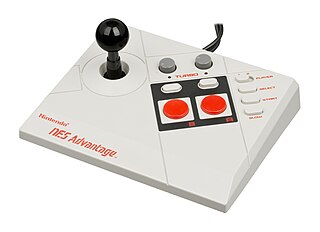
The NES Advantage is an arcade style controller manufactured by Asciiware and released by Nintendo for the Nintendo Entertainment System in 1987. The device is meant to rest on a flat surface at a comfortable level, such as a tabletop or the floor, with the player seated behind it. This way, it can be used like an arcade game joystick—with the left hand using the joystick and the right hand operating the buttons.

Punch-Out!! is an 1984 arcade boxing video game by Nintendo. It was the first in a series of Punch-Out!! games.

Nekketsu Kōha Kunio-kun, released as Renegade in the West, is a beat 'em up video game developed by Technōs Japan and distributed by Taito for the arcades in 1986. In the original Japanese version Nekketsu Kōha Kunio-kun, the game revolves around a high-school delinquent named Kunio-kun who must stand up against a series of rival gangs frequently targeting his classmate Hiroshi. In the Western version Renegade, the player controls a street brawler who must face four different gangs in order to rescue his girlfriend being held captive by a mob boss.

Tag Team Wrestling, known as The Big Pro Wrestling! in Japan, is a wrestling video game developed by Technōs Japan and released for arcades in 1983. The arcade version was published by Data East both in Japan and North America, but only the North American version mentions the name of Data East in-game. It was later ported in the mid-1980s to computers and the Famicom/NES.
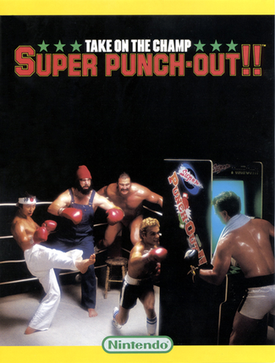
Super Punch-Out!! is a 1984 arcade boxing game by Nintendo. The sequel to Punch-Out!!, it follows the same format while adding several new features and characters. Along with punching, blocking and dodging, players also have the ability to duck. The game also saves and displays the three fastest knockout times, while the game's difficulty is increased.
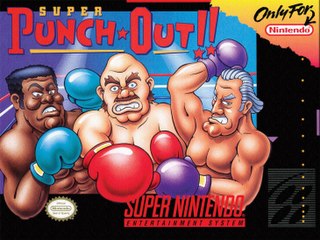
Super Punch-Out!! is a boxing video game developed and published by Nintendo for the Super Nintendo Entertainment System (SNES). It was released on September 14, 1994 in North America and again in the same region in 1996. It was released in Europe on January 26, 1995 for the same console and in Japan in 1998 for the Super Famicom through the Nintendo Power flash RAM cartridge series. The game is also included in the GameCube version of Fight Night Round 2 as an extra game due to the inclusion of Little Mac in the game. The game was released for the Wii's Virtual Console in Europe on March 20, 2009, in North America on March 30, 2009, and in Japan on July 7, 2009. The game was also released on the New Nintendo 3DS eShop on May 5, 2016. Nintendo re-released Super Punch-Out!! in the United States in September 2017 as part of the company's Super NES Classic Edition. It is the fourth game in the Punch-Out!! series, taking place after the Punch-Out!! game for the Nintendo Entertainment System (NES).

Double Dribble is an arcade basketball video game developed and released by Konami in 1986. It was the second basketball arcade video game by Konami, following Super Basketball. It was considered the most realistic basketball sports video game upon release, with fast-paced action, detailed players, a large side-scrolling court, innovative cinematic slam dunks, and detailed sound effects, beginning a trend where presentation would play an increasingly important role in sports games.

Saturday Night Slam Masters, known in Japan as Muscle Bomber: The Body Explosion, is a 1993 pro wrestling arcade game released for the CP System by Capcom. The game features character designs by manga artist Tetsuo Hara, famous for Fist of the North Star.
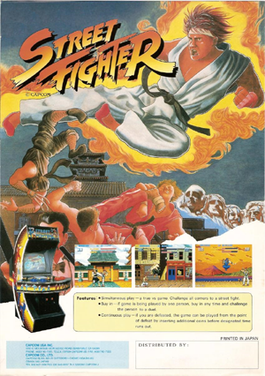
Street Fighter is a 1987 arcade video game by Japanese developer and publisher Capcom. It is the first competitive fighting game produced by the company and the first installment in the Street Fighter series. It was a commercial success in arcades and introduced special attacks and some of the conventions made standard in later fighting games, such as the six-button controls and the use of command-based special moves.

Fatal Fury: King of Fighters, known as Garō Densetsu: Shukumei no Tatakai in Japan, is a 1991 head-to-head fighting game released by SNK for the Neo Geo arcade and home platforms. Fatal Fury was SNK's first fighting game for the Neo Geo system and served as the inaugural game in their Fatal Fury series, as well as the first game to depict the fictional "King of Fighters" tournament, which became the basis for the later The King of Fighters games.

Hyper Sports, known in Japan as Hyper Olympic '84, is an Olympic-themed sports video game released by Konami for arcades in 1984. It is the sequel to 1983's Track & Field and features seven new Olympic events. Like its predecessor, Hyper Sports has two run buttons and one action button per player. The Japanese release of the game sported an official license for the 1984 Summer Olympics.

3 Count Bout is a wrestling arcade game released by SNK in 1993.
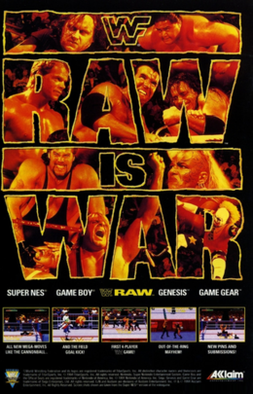
WWF Raw is a professional wrestling video game based on the television show of the same name produced by the World Wrestling Federation (WWF), released for the SNES, 32X, Mega Drive/Genesis, and Game Boy in late 1994 and early 1995 by Acclaim Entertainment. It is the sequel to the WWF Royal Rumble game that was released in 1993, and is the final part of LJN's 16-bit WWF trilogy. Players can play either One-on-One, Tag Team, Bedlam, Survivor Series, Royal Rumble, or a Raw Endurance Match. Unlike its predecessor, WWF RAW is multitap compatible.
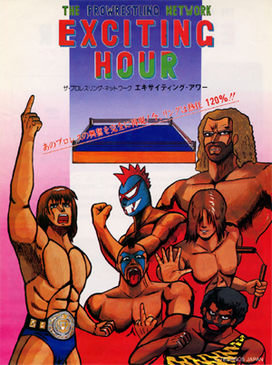
Mat Mania, known in Japan as Exciting Hour: The ProWrestling Network or simply Exciting Hour, is a Japanese wrestling arcade video game developed by Technōs Japan and published by Taito in 1985. It is a spiritual successor to the 1983 arcade game Tag-Team Wrestling, also developed by Technōs Japan, but published by Data East. The arcade game was a commercial success in Japan and North America, becoming the highest-grossing arcade conversion kit of 1986 in the United States.
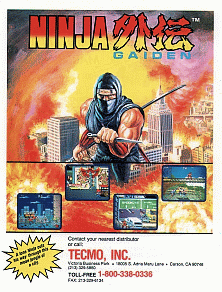
Ninja Gaiden, released in Japan as Ninja Ryūkenden and in Europe as Shadow Warriors, is a 1988 side-scrolling beat-'em-up game, originally released by Tecmo as a coin-operated arcade video game. It was first released in North America and Europe in late 1988, and then in Japan in February 1989. It was the first game released in the Ninja Gaiden franchise. The arcade game was a major commercial success in North America, becoming the highest-grossing arcade conversion kit of 1989 in the United States.

WWF WrestleMania is a game developed by Twilight and published by Ocean Software in 1991 for the Amiga, Amstrad CPC, Atari ST, Commodore 64, ZX Spectrum, and DOS. Named after the World Wrestling Federation's (WWF) annual pay-per-view event WrestleMania, it was the first WWF licensed game available for these computers which were still dominant in Europe. It was followed on most of these computers by 1992's WWF European Rampage Tour.

Punch-Out!! is a boxing video game series created by Nintendo's general manager Genyo Takeda, and his partner Makoto Wada. It was originally created because Nintendo had too many TV screens lying around in their warehouse, due to buying an abundance of them after the success of Donkey Kong. Genyo Takeda was consulted as to what to make, and he suggested a boxing game. Thus Punch-Out!! was born.

Arms is a 2017 fighting game developed and published by Nintendo for the Nintendo Switch. The game differentiates itself from standard fighting games with its unconventional fighting system where every playable character fights with long range attacks and up to four players can choose a fighter and battle using a variety of extendable, weaponized arms to knock out opponents in a three-dimensional arena. Arms received generally favorable reviews from critics and sold over two million copies by July 2018.
Twin-stick shooter is a subgenre of shoot 'em up video games. It is a multidirectional shooter in which the player character is controlled using two joysticks: the first for movement on a flat plane and the second to shoot in the direction the joystick is pushed. Usually shots are fired as soon as the second joystick is moved, but in some games there is an additional button which must be held. Keyboard and mouse or touch input may supplant one or both joysticks. A few games, such as 1981's Vanguard, don't have a second joystick for shooting, but provide four buttons arranged in a diamond to fire in the cardinal directions.



















